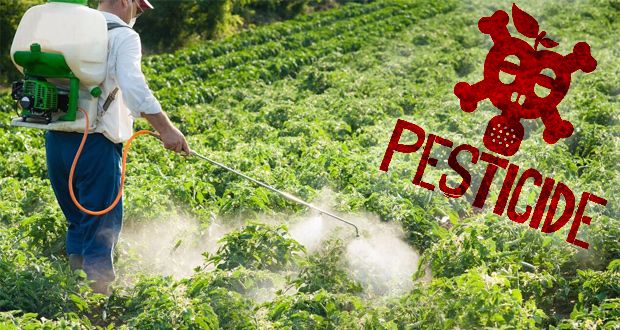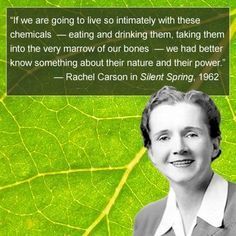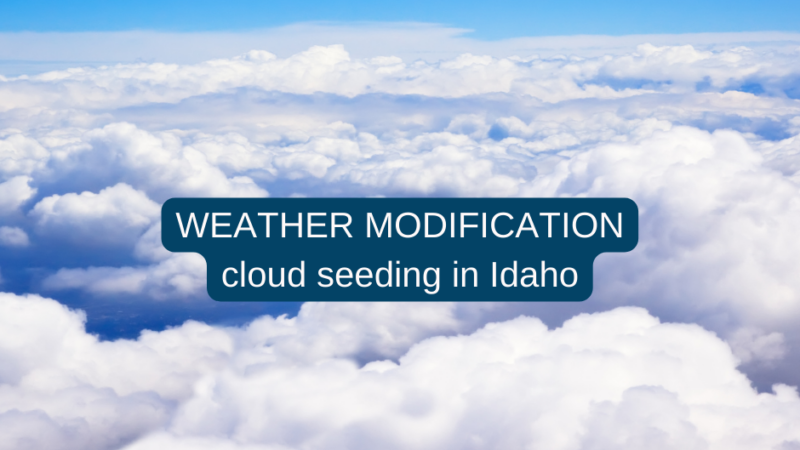The Problem with Pesticides


Pesticides
Pesticides are the only toxic substances released intentionally into our environment to kill living things. This includes substances that kill weeds (herbicides), insects (insecticides), fungus (fungicides), rodents (rodenticides), and others.
The use of toxic pesticides to manage pest problems has become a common practice around the world. Pesticides are used almost everywhere — not only in agricultural fields, but also in homes, parks, schools, buildings, forests, and roads. It is difficult to find somewhere where pesticides aren’t used — from the can of bug spray under the kitchen sink to the airplane crop dusting acres of farmland, our world is filled with pesticides. In addition, pesticides can be found in the air we breathe, the food we eat, and the water we drink.
Pesticides have been linked to a wide range of human health hazards, ranging from short-term impacts such as headaches and nausea to chronic impacts like cancer, reproductive harm, and endocrine disruption.
<pdf printable about pesticides and human health>
Acute dangers – such as nerve, skin, and eye irritation and damage, headaches, dizziness, nausea, fatigue, and systemic poisoning – can sometimes be dramatic, and even occasionally fatal.
Chronic health effects may occur years after even minimal exposure to pesticides in the environment, or result from the pesticide residues which we ingest through our food and water. A July 2007 study conducted by researchers at the Public Health Institute, the California Department of Health Services, and the UC Berkeley School of Public Health found a sixfold increase in risk factor for autism spectrum disorders (ASD) for children of women who were exposed to organochlorine pesticides.
Pesticides can cause many types of cancer in humans. Some of the most prevalent forms include leukemia, non-Hodgkins lymphoma, brain, bone, breast, ovarian, prostate, testicular and liver cancers. In February 2009, the Agency for Toxic Substances and Disease Registry published a study that found that children who live in homes where their parents use pesticides are twice as likely to develop brain cancer versus those that live in residences in which no pesticides are used.
Studies by the National Cancer Institute found that American farmers, who in most respects are healthier than the population at large, had startling incidences of leukemia, Hodgkins disease, non-Hodgkins lymphoma, and many other forms of cancer.
There is also mounting evidence that exposure to pesticides disrupts the endocrine system, wreaking havoc with the complex regulation of hormones, the reproductive system, and embryonic development. Endocrine disruption can produce infertility and a variety of birth defects and developmental defects in offspring, including hormonal imbalance and incomplete sexual development, impaired brain development, behavioral disorders, and many others. Examples of known endocrine disrupting chemicals which are present in large quantities in our environment include DDT (which still persists in abundance more than 20 years after being banned in the U.S.), lindane, atrazine, carbaryl, parathion, and many others.
Multiple Chemical Sensitivity (MCS) is a medical condition characterized by the body’s inability to tolerate relatively low exposure to chemicals. This condition, also referred to as Environmental Illness, is triggered by exposure to certain chemicals and/or environmental pollutants. Exposure to pesticides is a common way for individuals to develop MCS, and once the condition is present, pesticides are often a potent trigger for symptoms of the condition. The variety of these symptoms can be dizzying, including everything from cardiovascular problems to depression to muscle and joint pains. Over time, individuals suffering from MCS will begin to react adversely to substances that formerly did not affect them. (toxic buildup)
For individuals suffering from MCS, the only way to relieve their symptoms is to avoid those substances that trigger adverse reactions. For some individuals, this can mean almost complete isolation from the outside world.
Pesticides and Children
Children are particularly susceptible to the hazards associated with pesticide use. There is now considerable scientific evidence that the human brain is not fully formed until the age of 12, and childhood exposure to some of the most common pesticides on the market may greatly impact the development of the central nervous system. Children have more skin surface for their size than adults, absorb proportionally greater amounts of many substances through their lungs and intestinal tracts, and take in more air, food and water per pound than adults.
Children have not developed their immune systems, nervous systems, or detoxifying mechanisms completely, leaving them less capable of fighting the introduction of toxic pesticides into their systems.
Pesticides and the Environment
Since the publication of Rachel Carson’s landmark 1962 book Silent Spring, the impacts of pesticides on the environment have been well known. Pesticides are toxic to living organisms. Some can accumulate in water systems, pollute the air, and in some cases have other dramatic environmental effects. Scientists are discovering new threats to the environment that are equally disturbing.
Pesticide use can damage agricultural land by harming beneficial insect species, soil microorganisms, and worms which naturally limit pest populations and maintain soil health;
Weakening plant root systems and immune systems;
Reducing concentrations of essential plant nutrients in the soil such nitrogen and phosphorous.
The Solution to Pesticides
We need to make our food, our air, our water, and our soil free from toxic chemicals.
The real solution to our pest and weed problems lies in non-toxic and cultural methods of agriculture, not in pulling the pesticide trigger. Organically grown foods and sustainable methods of pest control are key to our families’ health and the health of the environment.




